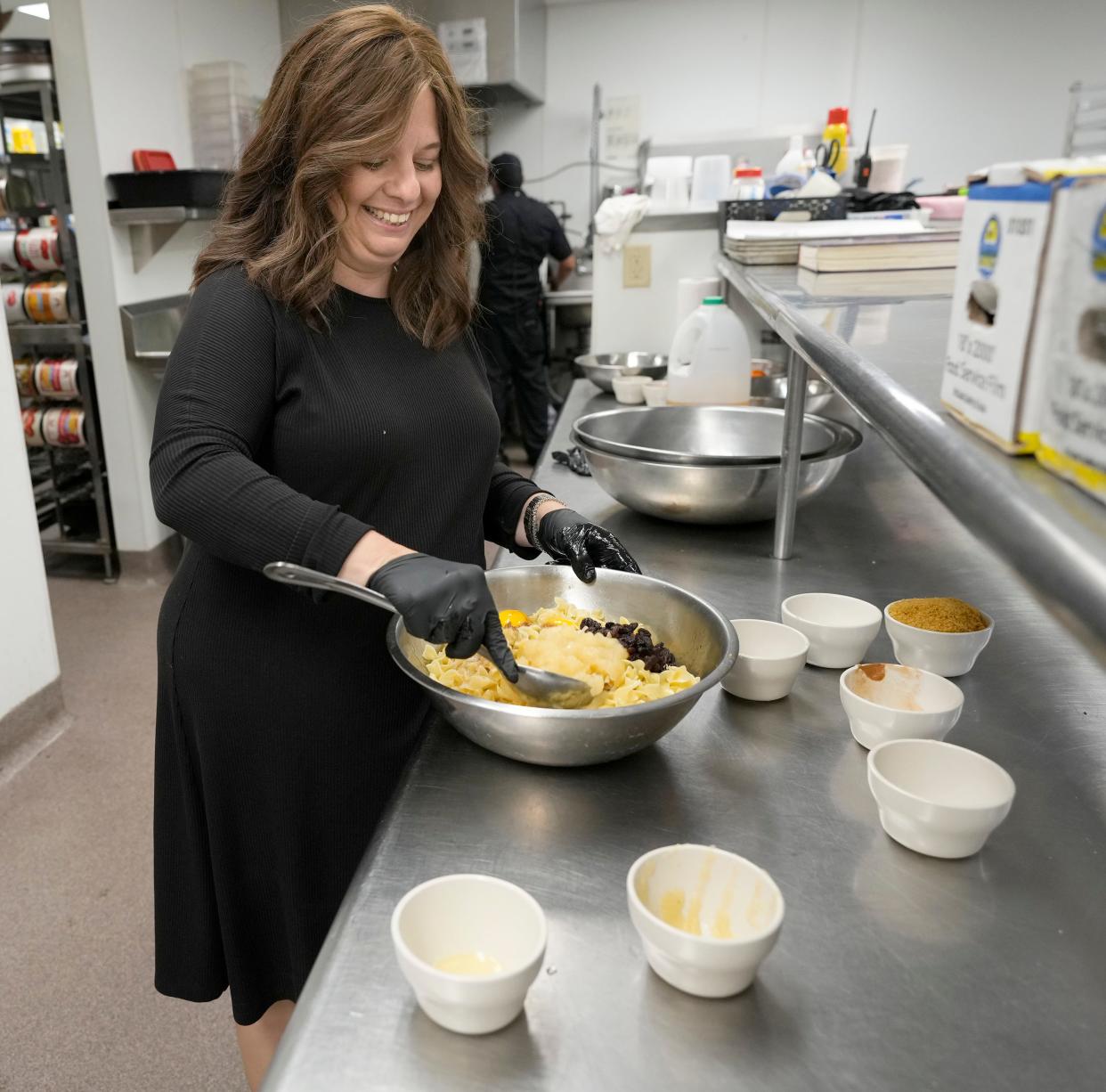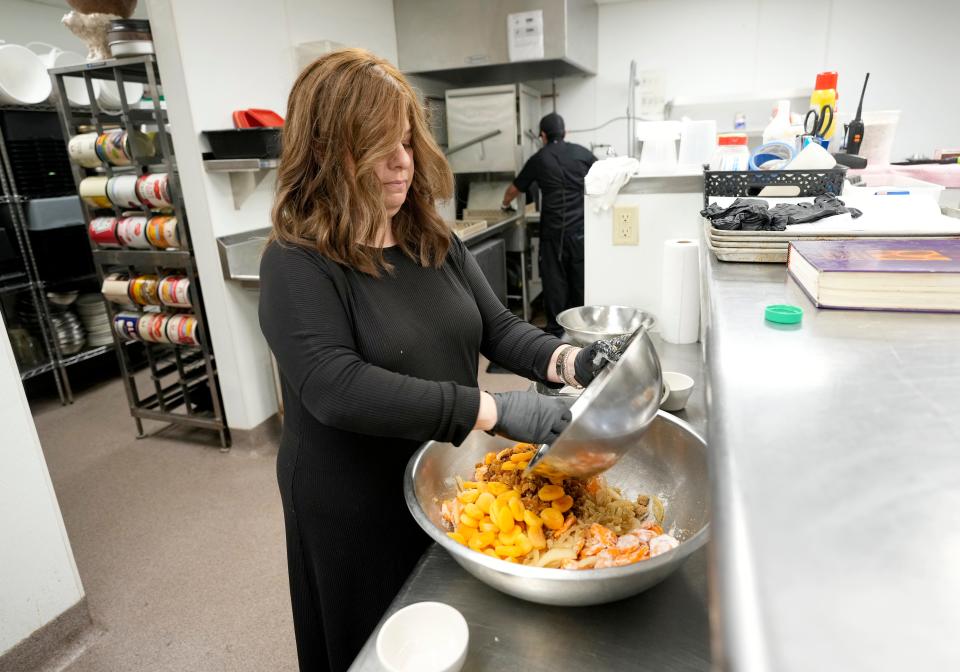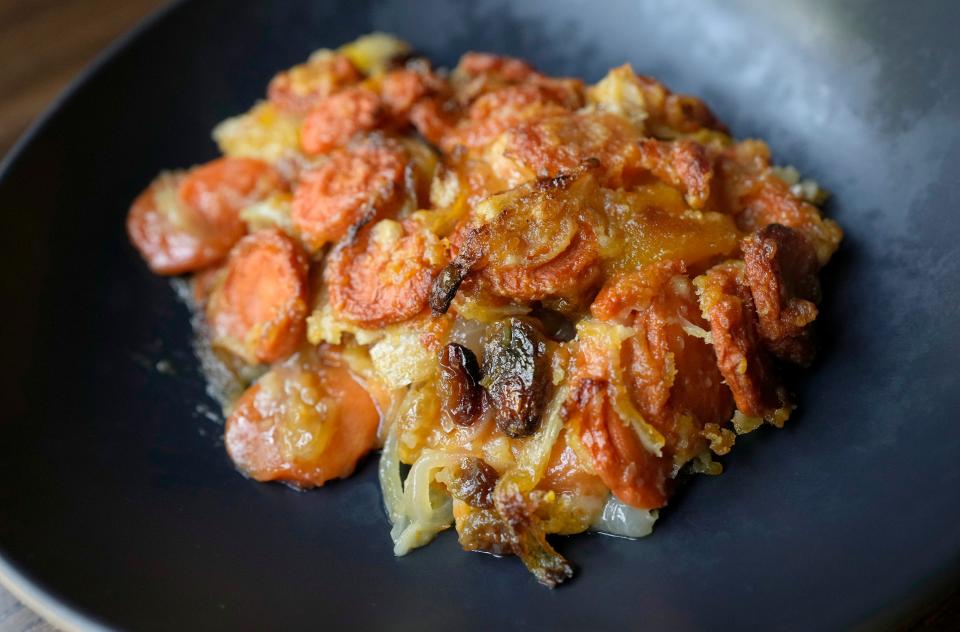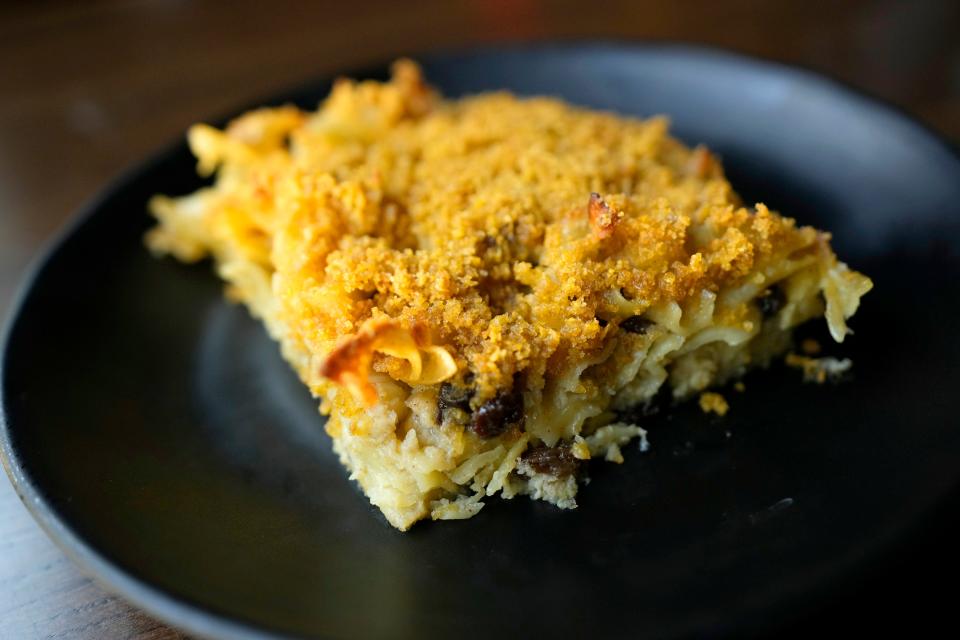Tweaking Grandma's holiday favorites: Rosh Hashanah foods get a modern twist

Every family has traditional foods that are passed down from generation to generation, but chances are Grandma’s turkey stuffing and Aunt Betty’s apple pie have changed a bit over the years.
Tweaks and shortcuts happen. They might be motivated by convenience, availability of ingredients or simply to jazz up a recipe.
As Rosh Hashanah, the Jewish New Year, approaches, American Jewish families look forward to festive holiday meals that most likely include chicken soup, possibly brisket, and a variety of side dishes and desserts.
The goal in updating recipes is to incorporate subtle changes while maintaining or enhancing the flavor.
When Rosh Hashanah begins at sundown Sept. 25, Hudi Rapoport will welcome 25 family members and friends to her home in Mequon. The menu will feature traditional family favorites, but Rapoport’s Rosh Hashanah dinner would not be complete without two dishes that came from Hudi’s grandmother, affectionately known as “Bubbe,” the Yiddish word for grandmother.
“I grew up in New Jersey, my grandmothers both lived in Brooklyn, and we used to go there for the holidays. I’m from a family of eight, so it was always big family meals,” Rapoport said. “Kugel and tzimmes were on the table no matter what. But I’ve added items that you’d never see 40 years ago.”
Lokshen (noodle) kugel can be sweet or savory, and tzimmes is a sweet mixture of carrots, onions and dried fruit; both are holiday favorites, taste-wise and symbolically. “On Rosh Hashanah we tend to eat sweet foods because we want to have a sweet year,” Rapoport explained.
Monday, Sept. 26, is the first full day of Rosh Hashanah, but Jewish holidays begin at sundown the evening before, called erev. Most families celebrate with a festive and symbolic erev Rosh Hashanah meal, and more observant families celebrate two days of Rosh Hashanah at lunch or dinner on Monday and Tuesday.
More: Look for a white carrot: Adapting Rosh Hashanah soup
Say 'yes' to cornflakes on kugel
Lokshen kugel is a traditional Ashkenazi Jewish dish, but adding the crunchy topping is a tweak on this classic.
“Bubbe’s sweet kugel recipe was basically noodles, a lot of sugar, honey, eggs, raisins, and it was fried,” Rapoport said. She took the recipe from a well-loved cookbook and adapted it for a more interesting, fresher and healthier result.
“The kugel definitely still has the noodles and the eggs, but now I put in grated fresh apples, and I make a cornflake topping. Instead of frying it, you oven-bake it,” Rapoport says.
“My mother probably changed the recipe a bit, and I changed it a little bit more. The cornflake topping is a newer thing; that wouldn’t be happening 45 years ago. But it’s still the basic, good-old lokshen kugel recipe. People love it.”

Fruity, fun tzimmes
“I know there are many communities where tzimmes had meats, but my Bubbe never made it that way. When I was growing up, she always used carrots and sugar; that was her tzimmes. We loved it because it was basically candied carrots,” Rapoport recalls.
“I wanted something prettier for the plate. What's different about this tzimmes is that we added apricots and golden raisins. It’s more of a fruity tzimmes, in addition to the sweet carrots,” Rapoport said.
Tzimmes creates interaction among the guests at Rapoport’s holiday table.
“This dish always brings out the conversation of how their bubbe made it,” Rapoport said. Guests will say, ‘Oh, my bubbe used to do it with meat,’ or ‘my bubbe used to do it with pineapple.’ There are all sorts of conversation around that. And you could be coming from two completely different backgrounds.
"My grandmother is (originally) from Russia, and their grandmother might be from Wisconsin,” Rapoport said.
Once again, food does more than please the palate; it serves as a catalyst for uniting people.
Tzimmes has Judaic symbolism beyond just sweetness. “The word carrot in Yiddish is merren, and it means both carrot and to increase. We eat carrots because we're basically symbolizing a wish for a year of abundance,” Rapoport explained.
Although Rapoport made subtle changes to her grandmother’s dishes, she guarantees that her lokshen kugel and tzimmes are as delicious as they were when Bubbe made them.
No time to cook? No worries.
When Rapoport isn’t hosting family dinners, she can be found running the Deli on Crown kosher restaurant in Mequon. Rapoport’s kugel, tzimmes and a full menu of Jewish holiday favorites are available for pickup.
Rosh Hashanah orders must be placed by Sept. 16 at their website, thedelioncrown.com or by calling (262) 336-3695.
*****
The sweetness of the carrots and dried fruit make this a perfect Rosh Hashanah side dish. Freshly sliced carrots are ideal, but canned carrots are an acceptable time saver.
Adapted from "Spice and Spirit: The Complete Kosher Jewish Cookbook "

Bubbe’s tzimmes
Serves 8-10
Recipe tested by Joan Elovitz Kazan
4 cups carrots, cut into discs, or two 14.5 ounce cans sliced carrots
2 large onions, sliced
2 tablespoons flour
¼ cup vegetable oil
¼ cup whole dried apricots
¼ cup golden raisins
¼ cup brown sugar
½ teaspoon salt
Heat oven to 350 degrees.
*****
“Loskshen” means noodles in Yiddish; kugel is typically made with noodles or potatoes and can be savory or sweet. This sweet version of the casserole is a traditional Ashkenazi side dish. Many families serve kugel year-round, but it’s a perfect complement for a festive Rosh Hashanah meal.

Bubbe’s sweet lokshen kugel
Makes 8 servings
Recipe tested by Pete Sullivan
For the kugel:
8 ounces medium egg noodles
¼ cup vegetable oil
4 eggs, beaten
1 cup chunky applesauce
1 teaspoon ground cinnamon
1 teaspoon salt
1 teaspoon ground cinnamon
¼ cup sugar
½ cup cornflakes
Cook the noodles per directions. Heat oven to 350 degrees.
Mix kugel ingredients together in a medium bowl. In a smaller bowl, mix topping ingredients until well blended. Lightly grease an 8-by-8-inch pan and spread kugel mixture in it. Spread topping to cover the entire kugel evenly. Cover with foil and bake for 50 minutes. Uncover and bake an additional 10 minutes or until topping is lightly browned.
Sign up for our Dish newsletter to get food and dining news delivered to your inbox.
Our subscribers make this reporting possible. Please consider supporting local journalism by subscribing to the Journal Sentinel at jsonline.com/deal.
DOWNLOAD THE APP: Get the latest news, sports and more
This article originally appeared on Milwaukee Journal Sentinel: Rosh Hashanah foods get a modern twist; Milwaukee families celebrate

